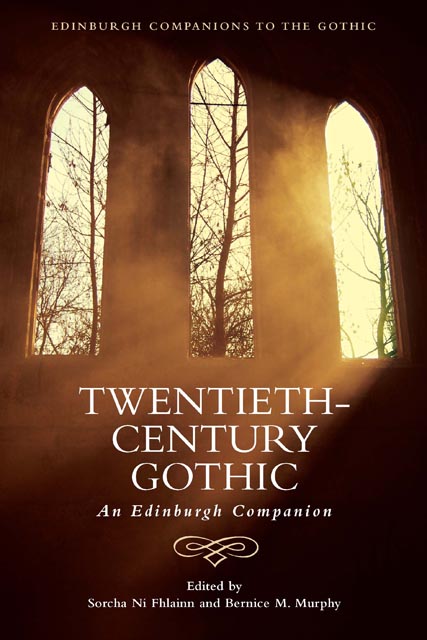18 - Big Bad Wolves and Angry Sharks: The Ecogothic and a Century of Environmental Change
Published online by Cambridge University Press: 18 November 2022
Summary
Defining the Ecogothic
The Gothic, as Tom J. Hillard has argued, is ‘notoriously slippery’, and the ecogothic is no less complex. Yet David Punter has written that there is one stable element in the Gothic, ‘and that is fear’; similarly, the ecogothic is fundamentally about human fears related to the natural world. Chris Baldick's more detailed description of the Gothic says that it ‘should combine a fearful sense of inheritance in time with a claustrophobic sense of enclosure in space, these two dimensions reinforcing one another to produce an impression of sickening descent into disintegration’. The ecogothic, too, pays particular attention to the element of space – particularly natural spaces.
Many ecogothic narratives ask, for instance, what lurks in the forest? As Elizabeth Parker writes, ‘The Deep Dark Forest is exactly that – deep and dark – and the exact source of its terrors is often mysterious, shadowy, and just out of sight.’ The source of terror might be the forest itself – as in Algernon Blackwood's ‘The Willows’ (1907) and ‘The Man Whom the Trees Loved’ (1912) – or it could be a monster (or witch) living within – as in The Blair Witch Project (1999).
The cabin in the woods, another common setting of ecogothic narratives, suggests the centrality of the ecogothic within the broader Gothic. As Bernice M. Murphy argues, ‘[t]he cabin in the woods is to the American Gothic what the haunted castle is to the European – the seed from which everything else ultimately grows’. The cabin in the woods, provocatively described here with the language of nature, represents a space beyond civilisation, underscoring the tendency of the ecogothic to separate human and nonhuman, identifying the latter as a threat to safety and order. Insofar as forests and similar spaces exist outside human control and knowledge, they are sources of fear.
These fears are not universal, however. Murphy writes that ‘[e]co-horror films are most commonly found in the US and Australia, both nations established by the descendants of white settlers who set out to create a “new world” in the midst of a vast, unfamiliar, and often physi-cally treacherous landscape already occupied by resentful native inhabitants’, and this indicates that the forest is frightening specifically for white settlers who do not understand the landscape and who must also deal with the people whose homes they are invading.
- Type
- Chapter
- Information
- Twentieth-Century GothicAn Edinburgh Companion, pp. 290 - 304Publisher: Edinburgh University PressPrint publication year: 2022



